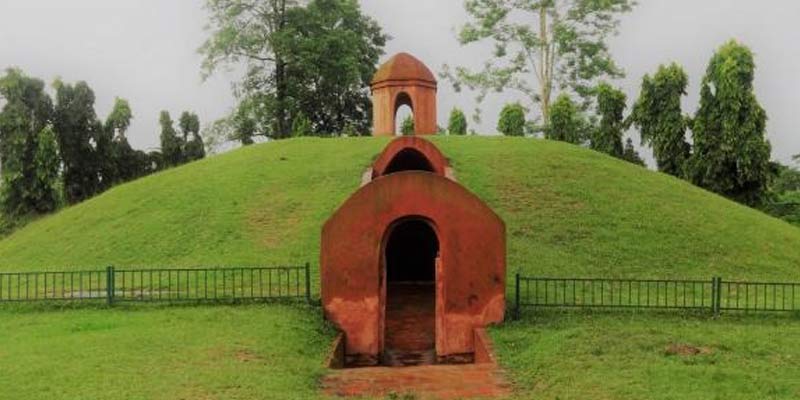- India
- Jul 27
Assam’s ‘Moidams’ get UNESCO World Heritage Site tag
• ‘Moidams’ — the centuries-old mound-burial system of the Ahom dynasty in Assam was included in the UNESCO World Heritage List, making it the first cultural property from the northeast to get the coveted tag.
• The decision was taken during the ongoing 46th session of the World Heritage Committee (WHC) being held in India.
• The Moidams at Charaideo, often referred to as the “Pyramids of India”, are a series of grand, earthen mounds that serve as the burial sites for the Ahom royalty.
• These structures date back to the 13th century and showcase the intricate funerary practices and cosmological beliefs of the Tai-Ahom people.
• The Moidams are characterised by their hemispherical shape, brick structures, and octagonal boundary walls with arched gateways.
• The site is partly under the Archaeological Survey of India (ASI) and partly under the state administration.
Moidams – the Mound-Burial System of the Ahom Dynasty
• The Ahoms came to Assam in 1228 AD and ruled for nearly 600 years. The Ahom dynasty was established by Chao Lung Siu-Ka-Pha, a Shan prince of Mong Mao who came to Assam after crossing the Patkai Mountains. The rule of this dynasty ended with the Burmese invasion of Assam and the subsequent annexation by the British East India Company following the Treaty of Yandabo in 1826.
• Charaideo, more than 400 km east of Guwahati, was the first capital of the Ahom dynasty.
• The word Charaideo has been derived from three Tai-Ahom words, Che-Rai-Doi. Che means City or Town, Rai means Shine or Dazzle and Doi means Hill or Mountain. In short, Charaideo means, “a shining town situated on a hilltop.”
• For 600 years, the Tai-Ahom created moidams (burial mounds) accentuating the natural topography of hills, forests and water, thus forming a sacred geography. Banyan trees and the trees used for coffins and bark manuscripts were planted and water bodies created.
• As many as 90 moidams — hollow vaults built of brick, stone or earth — of different sizes are found within the site. They contain the remains of kings and other royals together with grave goods such as food, horses and elephants, and sometimes queens and servants.
• The series of moidams at the foothills of the Patkai range together show the sculpted burial landscape reminiscent of the hills. The group of Moidams in Choraideo has been systematically restored to safeguard its structural integrity.
• Moidams are vaulted chambers (chow-chali), often double storied entered through an arched passage. Atop the hemispherical mud-mound layers of bricks and earth is laid, where the base of the mound is reinforced by a polygonal toe-wall and an arched gateway on the west.
• Eventually the mound was covered by a layer of vegetation, reminiscent of a group of hillocks, transforming the area into an undulating landscape. Excavation shows that each vaulted chamber has a centrally raised platform where the body was laid.
• After the 18th century, the Ahom rulers adopted the Hindu method of cremation and later entombed the cremated bones and ashes at the Moidams at Charaideo.
Manorama Yearbook app is now available on Google Play Store and iOS App Store


